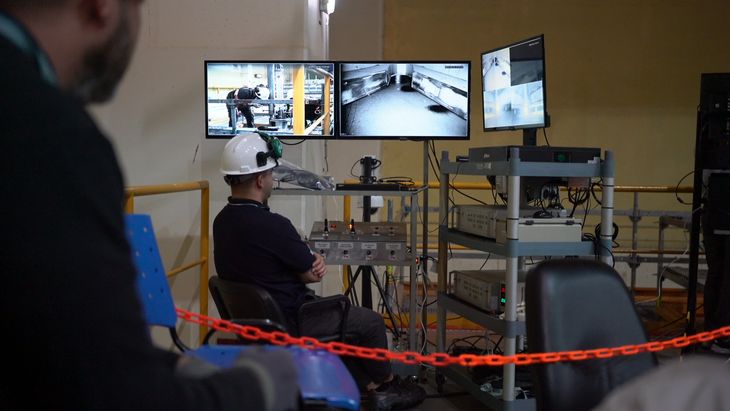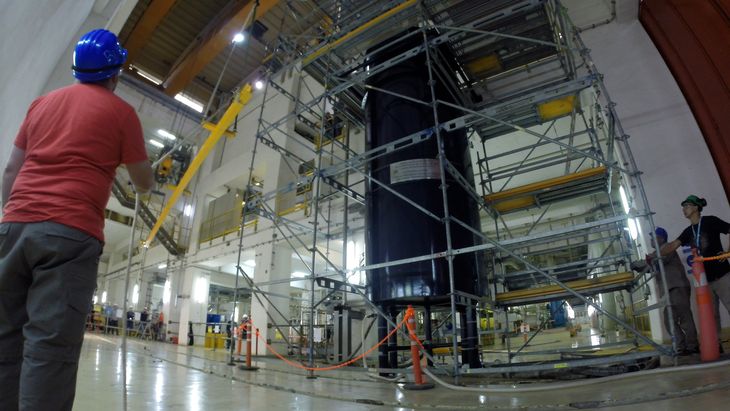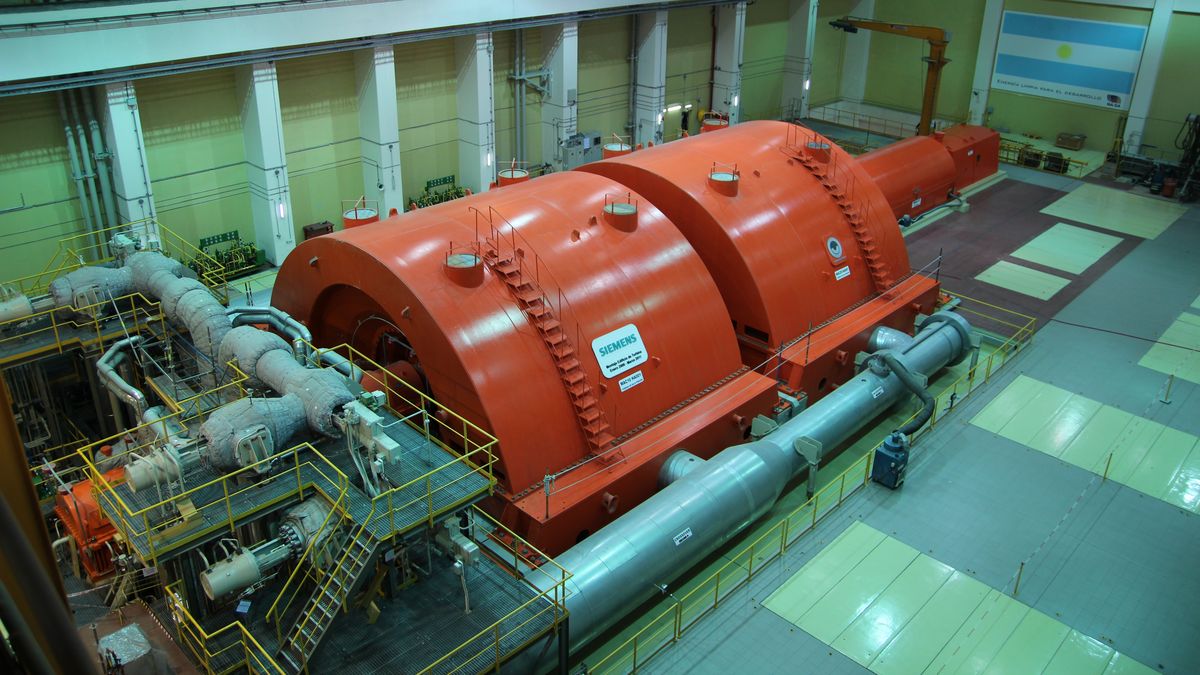Starting in June, a team of engineers from the Atucha II Nuclear Power Plant You will enter the building where the largest reactor in the country is located. In 24-hour work days that will require surgical precision, they will proceed to repair a defect, after having planned the intervention for 5 months. This Tuesday, Ámbito toured the plant to find out what the procedure will be like, 14 meters deep inside the reactor, in a radioactive environment.
Argentina has 3 nuclear power plants: Atucha I, Atucha II and Embalse, which generate around 7% of the energy matrix. As a result of the malfunction, Atucha II stopped operating in October, so the contribution of nuclear energy to the energy matrix was reduced by almost half, given that it has a power of 745 MWe.
During the tour of Atucha II, Jose Luis Antunez, President of Nucleoeléctrica Argentina, the state company that manages the nuclear power plants, anticipated that in June they will proceed to repair the reactor, and It is expected that it will be back in operation in July. the central. The return to operation in July, in the middle of winter (those who celebrate this warm climate today the most is in the Ministry of Energy) is important in part from the macroeconomic point of view.
Atucha II – View of the Turbine (3).JPG
Atucha II, inaugurated in 2014, is the most important nuclear power plant in Argentina. Official sources estimate that bills US$1 million per day for the generation of electricity, although the cost of generation is much lower than that of other energy sources. In addition, they calculate that for each month of operation, the State saves 1 LNG import ship.
However, the calculation made by Nucleoeléctrica is not the millions lost for having been 9 months without working Atucha II, nor the u$s20 million that the arrangement will cost. But what it could have cost if they went ahead with the arrangement that the original designers of the plant proposed to them from Germany: they suggested disassembling the entire reactor, something that would take a minimum of 3 years to stop the plant, at a cost of US$400 million.
“It would have implied losing 3% of Argentina’s energy every day,” Antúnez explained. In addition, from Nucleoeléctrica they want Atucha II to return to operation quickly since next year will stop operating Atucha I. It is that in 2024 the operating license expires, which marks the end of its first useful life cycle. Therefore, they will carry out a reconditioning that will last until 2026, with an investment of US$450 millionso that the plant can generate clean energy for two more decades.
Within the framework of the energy transition and the global crisis of energy shortages resulting from the war in Ukraine, nuclear energy became more relevant worldwide. Alejandro Estévez, one of the directors of Nucleoeléctrica, explained that one of the advantages it has is that it does not emit greenhouse gases, and it generates low waste intensity.
Atucha II – repair tasks (8).png

The official objective, revealed by Antúnez in Ámbito Debate last week, is for nuclear energy to rise from 7 to 10% of the energy matrix. Argentina is a country with a nuclear tradition: Atucha I, which began to be built in 1968, was the first power plant in America south of the Rio Grande. However, today the objective is far from being met: the consumption of electrical energy increases year by year, while for nuclear generation to also grow new nuclear power plants should be built.
From Nucleoléctrica, the first objective is to advance with the construction of Atucha III, for which they have already signed a contract with China. They already have reserved the property to do it: next to Atucha I and II, located in the municipality of Zárate, in the province of Buenos Aires. One of the obstacles go through financing: the Government wants China to finance 100% of the plant, which has a cost of US$8 billion.
But according to official sources, today the obstacle is more geopolitical: last year, members of the United States Embassy visited the Nucleoeléctrica headquarters and told them not to move forward with the Chinese-designed plant. “This year it is probable that nothing is advanced, except with what we depend on the IMF,” commented a source who preferred not to be named.
fix engineering
“It is a complex repair for a simple mechanical defect,” Antúnez described it. What happened was the detachment of one of the four supports that the nuclear reactor has. Hence the fix involves removing it, and soldering the remaining three. From the company they clarified that the mechanical failure “does not imply risks for the safety of people or the environment”, and that instead what it caused was that the plant had to work with a lower intensity.
The option chosen by the Nucleoeléctrica team that implies lower costs and shorter deadlines consists of not having to dismantle the entire reactor. Rather, they developed a tool with a Buenos Aires SME to cut the displaced support and be able to remove it through the reactor lid. The complexity lies in the fact that the detached support is 14 meters deep inside the reactor. EDM (underwater) cutting, like the welding method under pressure, was done with local suppliers.
Atucha II – repair tasks (1).jpg

Currently, what is happening in Atucha II is test what those 24 hours of procedure will be like when they enter the building where the reactor is. So in the turbine building there is what they call a mock up, a blue tank several meters high, where a crane, robots, clamps and cameras recreate with a real-scale model the conditions of what the repair procedure will be like, tools are tested and staff are trained. The mock up had been used in 1988 when Atucha I was repaired.
The last step is the one that will be taken in June: for 24 hours, teams made up of about eight people (engineers and technicians) will enter with special suits to proceed to make the repair inside the reactor, once the nuclear regulatory authority approves the maneuvers.
Source: Ambito




